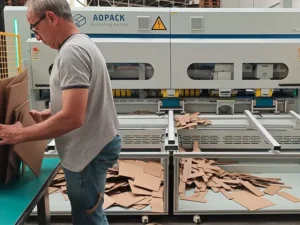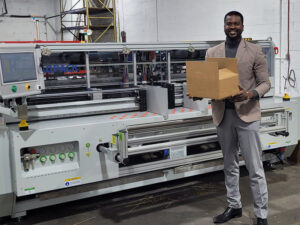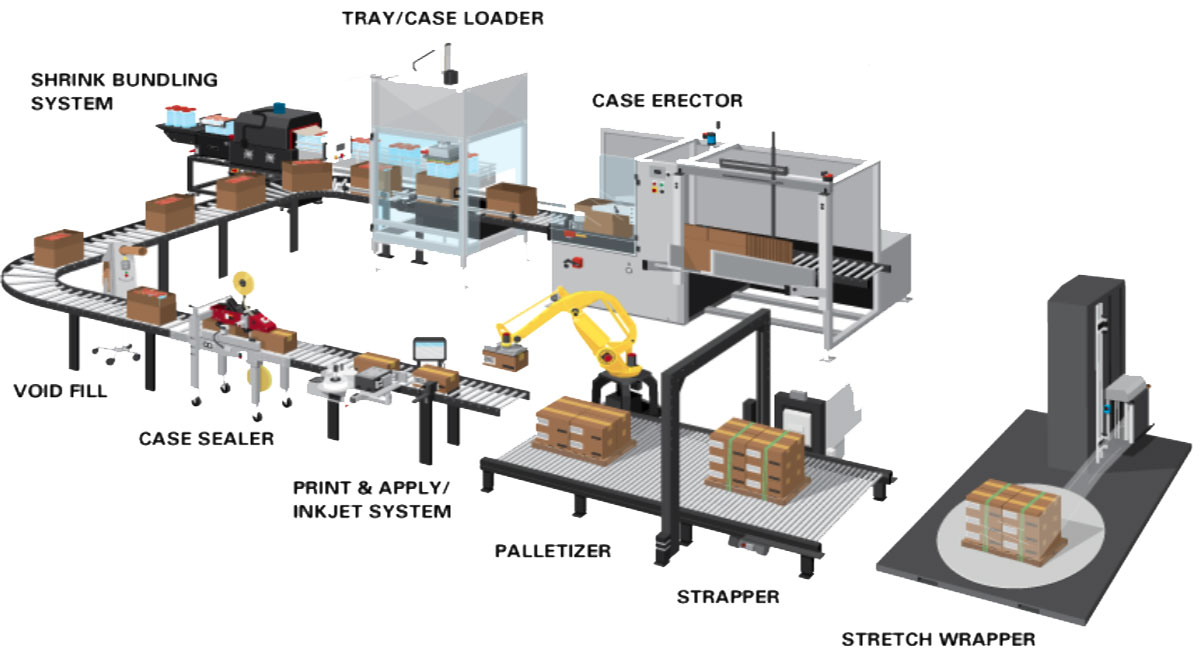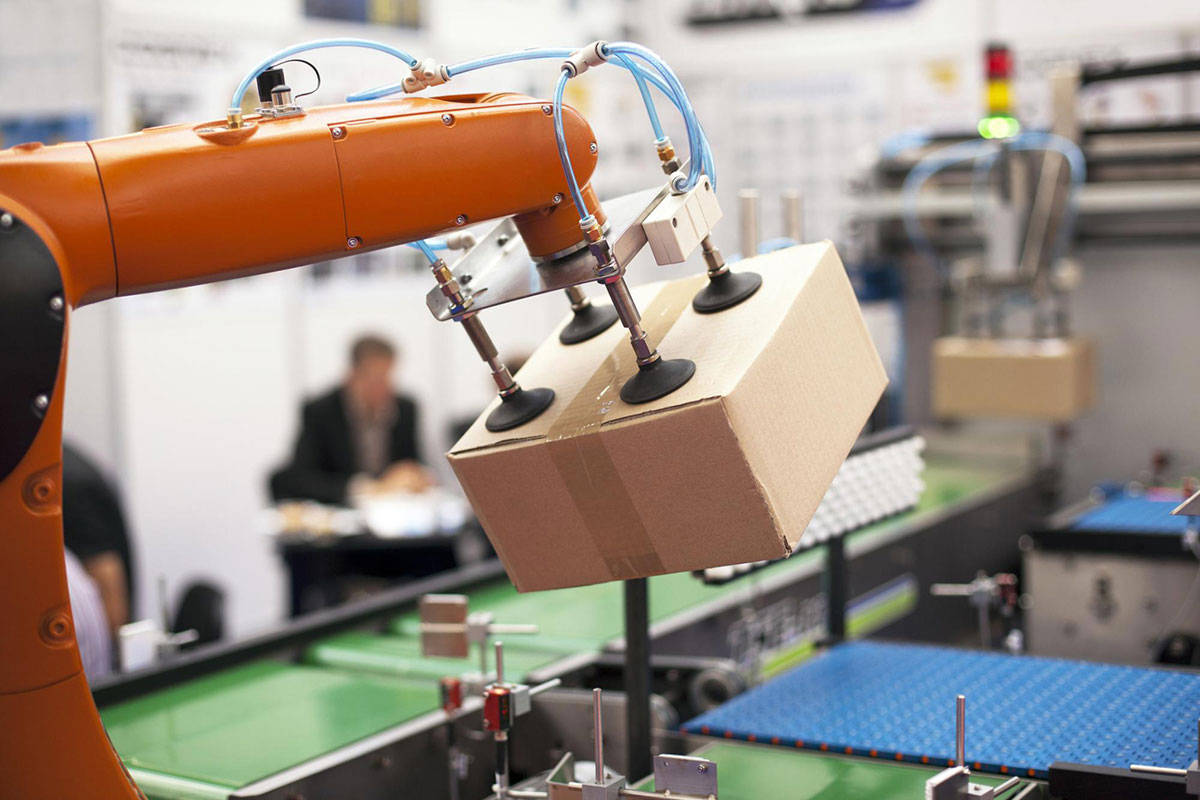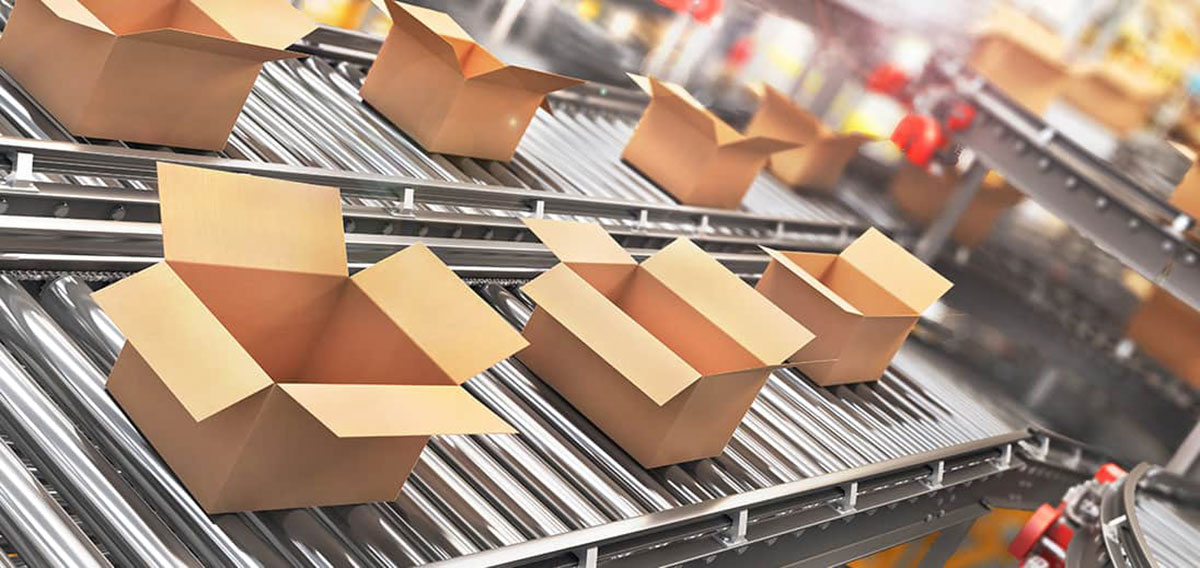Every business out there wants to boost their growth, right? Well, in today’s tech-savvy world, using packaging automation is a smart way to take your business to the next level. It helps by making sure your boxes are just the right size, cutting down on waste and extra space. Let’s dive deeper into why packaging automation is a great choice for helping smaller businesses shine.
1. An Overview of Packaging Automation
Packaging automation is all about using machines and software to pack products into their boxes efficiently. This includes tasks like filling, sealing, labeling, wrapping, and palletizing. By automating these processes, you can save time and money, allowing you to invest more in growing your business. Plus, it helps minimize damages and shipping costs, making it a win-win situation for your business.
In today’s cutthroat market, it’s crucial to streamline operations and cut costs wherever possible. Packaging plays a vital role in not just protecting products but also in showcasing your brand to customers. However, manual packaging processes can lead to inefficiencies and mistakes. That’s where packaging automation steps in as a game-changer for small businesses looking to enhance efficiency and expand their operations. Let’s automate and elevate your packaging game!
2. Why is Packaging Automation Important for Small Businesses?
It’s clear that automation is a powerful tool that can revolutionize operations and drive growth. By understanding the key benefits and advantages of packaging automation, small businesses can unlock new opportunities for efficiency, quality, and competitiveness in the market. Let’s delve deeper into how embracing packaging automation can propel small businesses toward success and sustainability. Small businesses can benefit from packaging automation in several ways, including:
1) Saving time and labor
Packaging automation can reduce the manual work and human intervention required for packaging, freeing up time and resources for other core activities. For example, a small bakery using an automated bread slicer and bagger can save up to 15 minutes per loaf, which can lead to increased production and sales.
2) Improving quality and consistency
Packaging automation can ensure that every product is packaged to the same standards and specifications, thereby improving the quality and appearance of the product and reducing the risk of errors and defects. For example, a small cosmetics company using automatic filling and capping machines can avoid overfilling or underfilling bottles, which can affect customer satisfaction and loyalty.
3) Reducing waste and costs
Packaging automation can help small businesses optimize material use and minimize waste generation, thereby reducing environmental impact and operating costs. For example, a small coffee roaster using an automated weighing and filling machine can reduce the waste of coffee beans and packaging materials, saving money and resources.
4) Increasing flexibility and scalability
Packaging automation can help small businesses adapt to changing customer demands and market conditions, and expand their production and distribution capabilities. For example, a small clothing retailer using an automatic labeler can easily switch between products in different sizes, colors, and styles, and handle larger orders and shipments.
These are some of the reasons why small businesses should automate their packaging. Investing in packaging automation can be a game-changer for small businesses. It’s not just about improving efficiency, but also about enhancing quality, sustainability, and profitability. By embracing automation, small businesses can stand out in the market and gain a competitive edge. It’s time to level up your packaging game and reap the benefits of automation!
3. How Does Packaging Automation Save Time, Money, and Resources for Small Businesses?
Obviously, automation is a game-changer in optimizing operations. By delving into the practical benefits of packaging automation, small businesses can harness its potential to drive efficiency and growth. Let’s now dive into how packaging automation not only enhances productivity but also maximizes cost-effectiveness for small businesses, paving the way for sustainable success in a competitive market landscape. In packaging automation, products are filled, sealed, labeled, and palletized automatically without human assistance. The following benefits can be gained by automating these processes:
1) Reduced labor costs
Packaging automation can reduce the need to hire, train, and manage packing workers. This can reduce wage expenses and the risk of human error, injury, or absenteeism. For example, a small business producing organic snacks can use a packaging machine to pack the right amount of product into a bag and seal it without having to rely on a human operator.
2) Increased productivity and efficiency
Packaging automation can speed up the packaging process and improve the output and quality of products. This can help small businesses meet demand and deliver orders faster and more accurately. For example, a small business selling handmade candles can use a labeling machine to apply labels with product information and barcodes instead of printing and applying them manually.
3) Optimized space and materials usage
Packaging automation can help small businesses optimize their use of limited space and materials. Packaging machines can be designed to fit the available space and use the optimal amount of packaging material for each product. This can reduce waste and storage costs. For example, a small business that produces handmade soaps can use a shrink-wrap machine to wrap the soaps with a thin layer of plastic instead of using bulky boxes or bags.
4. Emerging Opportunities and Challenges for Small Businesses
Packaging automation optimizes operations for small businesses by saving time, money, and resources. Beyond these immediate benefits, the landscape of packaging automation is continuously evolving, presenting both emerging opportunities and challenges. Some of the future trends shaping the packaging automation landscape include:
- Customers now want more customized products and need flexible and adaptable packaging solutions. Small businesses can use automation to create personalized labels, designs, and shapes. For example, a bakery can print personalized messages on cake boxes. A craft beer company can use different caps for various bottles.
- Environmental concerns push for eco-friendly and biodegradable packaging. Automation helps reduce waste, energy use, and emissions. For instance, a coffee roaster can use compostable bag sealers. A cosmetics company can pack products in recyclable tubes with a tube packer.
- IoT and cloud computing enable machines to collect and analyze more data. Small businesses can monitor and optimize packaging performance. For example, a candy manufacturer can use a weight filler to record each candy’s weight. A soap manufacturer can track products using a barcode scanner.
- The packaging automation market is growing at 9.1% CAGR, potentially reaching $69.7 billion by 2027. Small businesses will face competition from both large companies and new disruptors. Automation can provide a competitive advantage by offering faster, cheaper, and better products. For instance, a chocolate manufacturer can use a flow wrapper for attractive, hygienic packaging. A juice manufacturer can use a pouch-filling machine for convenient, portable pouches.
By leveraging these trends, small businesses can enhance efficiency, productivity, and customer satisfaction. Packaging automation not only saves time and money but also helps create unique value and differentiation.
5. Factors small businesses need to consider before investing in packaging automation
packaging automation is not a one-size-fits-all solution. Small businesses need to consider several factors before investing in packaging automation, such as:
- Their current and future packaging needs and goals. Assessing packaging challenges and opportunities, and determining the outcomes and expectations of packaging automation, is vital for small businesses. They should also anticipate their future growth and expansion plans, and how packaging automation can support them.
- Their budget and resources. Small businesses should evaluate their financial situation and the availability of resources, such as capital, space, and workforce. They should also consider the total cost of ownership and return on investment of packaging automation, which includes not only the initial purchase and installation costs, but also the ongoing maintenance, operation, and upgrade costs.
- Their compatibility and integration. If your business uses existing equipment, software, or processes, you should ensure that the packaging automation system you choose can integrate with them. They should also look for flexible and modular solutions that can be easily adapted and customized to their specific needs and preferences.
- Their vendor and partner. Small businesses should select a reliable and reputable vendor and partner that can provide them with quality products, services, and support. They should look for a vendor that has experience and expertise in packaging automation, and that can offer them consultation, design, installation, training, maintenance, and troubleshooting services.
By considering these factors, small businesses can make informed and strategic decisions about packaging automation, and find the best solution that suits their needs and goals.
6. Conclusion
Throughout this article, we have discussed how packaging automation can benefit small businesses. We have seen that packaging automation can:
- Increase efficiency and productivity by reducing manual labor, human errors, and downtime.
- Enhance quality and consistency by ensuring uniformity, accuracy, and compliance of the packaging process.
- Reduce costs and waste by optimizing the use of materials, energy, and space.
- Improve customer satisfaction and loyalty by delivering faster, safer, and more attractive packages.
These benefits can give small businesses a competitive edge in the market and help them grow and scale their operations. Packaging automation, however, Packaging automation can be a game-changer for small businesses, as it can boost their efficiency, quality, cost-effectiveness, and customer satisfaction. Therefore, small businesses should not hesitate to explore the possibilities and opportunities that packaging automation can offer them, and take action to implement it in their operations. Packaging automation can be the key to unlocking their full potential and achieving their success.
How useful was this post?
Click on a star to rate it!
Average rating 0 / 5. Vote count: 0
No votes so far! Be the first to rate this post.


